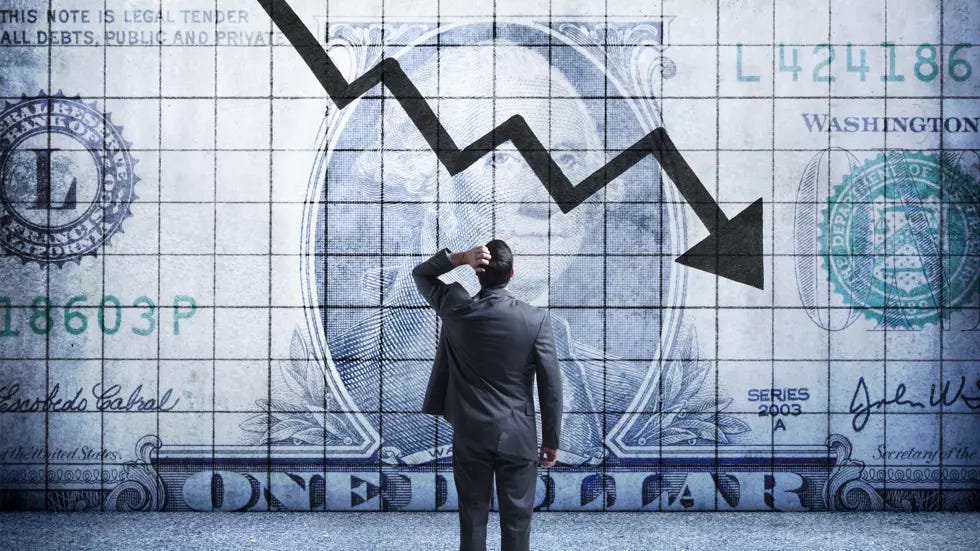If you liked reading this, feel free to click the ❤️ button on this issue so more people can discover it on Substack 🙏.
A few days ago, I took a look back at 5 things that surprised economists, analysts, and financiers around the world in 2023. At the forefront of these 5 things was the American economy.
At the start of 2023, one question was posed:
Could America escape recession?
All the conditions for a recession seemed to be in place, with interest rates soaring to historic heights in a highly interest-rate-sensitive economy.
On top of this, a record deficit and debt levels seemed to make any stimulus plan impossible. And of course, the end of post-COVID aid.
If you had asked 100 people about this, over 90 would have told you that a recession in the US economy was inevitable by 2023.
And yet, the US economy did better than resist in 2023.
Many articles talk about the “resilience” of the US economy, but in reality, with forecast growth of 2.4%, it's much more than resilience at this level.
What are the reasons for the US economy's surprise performance?
How has the American economy managed, once again, to beat all the forecasts made by economists in America and indeed the world over?
The answer lies with American consumers.
It is American consumers, and only American consumers, who have driven American growth, and indeed global growth. In 2023, American households consumed frenetically.
This is despite the impact of inflation on their purchasing power.
This explanation begs a new question:
How did American consumers manage to consume so much in 2023?
Where did American consumers manage to find the resources to consume like this?
The first answer lies in American household savings. Post-COVID forced savings represented an enormous mass. This windfall propelled the American savings rate to record levels.
American consumers dipped into their savings to such an extent that they largely squandered them, with the savings rate dropping to around 2.7%. This compares with over 15% in the major European economies.
The second answer lies in employment and wages. And this answer is probably more relevant.
It's even better in America: full employment and rising wages.
America is still at full employment. Jerome Powell and the Fed have struggled against this resilient labor market throughout 2023 without succeeding in reversing the trend.
The great resignation and the millions of unfilled job vacancies have enabled American consumers to obtain wage increases equal to or greater than inflation. This has given American households wings, and they have even broken through their debt ceilings, despite the rise in interest rates.
But has the American economy emerged from the risk of recession?
While savings have melted away, American households are benefiting from the wealth effect of the tremendous rise in the US stock market in 2023:
Rates are starting to fall, which should soon boost the debt levels of American households, which are already ultra-indebted. It is at record levels.
On Friday, January 4, 2024, the December employment figures were released, and it's fair to say they remain ultra-solid:
216,000 more jobs in America in December 2023.
2.7 million more jobs in 2023 after 4.8 million more in 2022.
All this with wage growth of 4.1%, and an unemployment rate of 3.7% close to historical records.
Even if America's strong employment performance will delay the slowdown of the American economy, this slowdown will nevertheless be unavoidable in the months to come...
It's a subject I'll be returning to with you in the weeks and months ahead.









Peter St. Onge gives a fantastic breakdown of the jobs report in his daily videos. Believing in any government number requires a stretch of imagination. No one believes CPI. No one should believe the employment numbers either. Everything is underreported, misreported, or ignored only to be revised months later. We are gaslighted at every turn except with Bitcoin. 1 BTC = 1 BTC.